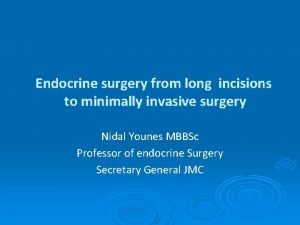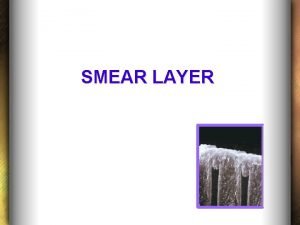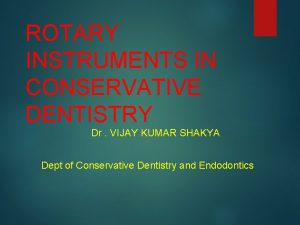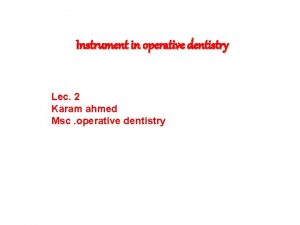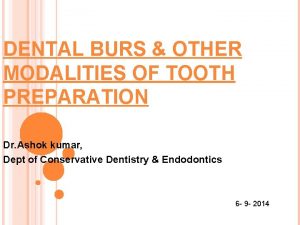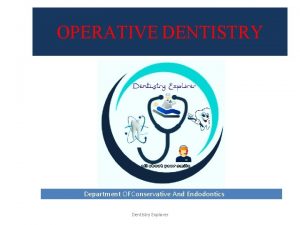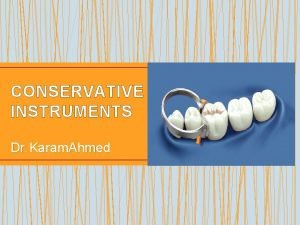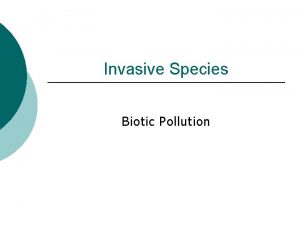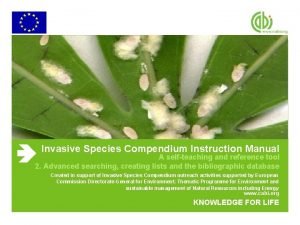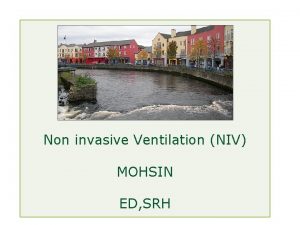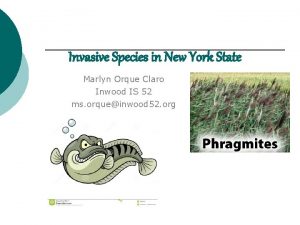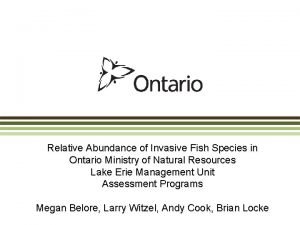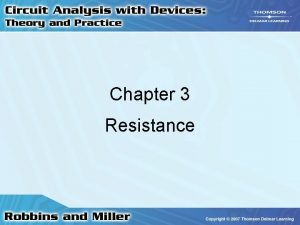Operative Dentistry Microleakage Resistance of Minimally Invasive Class

































- Slides: 33

Operative Dentistry Microleakage Resistance of Minimally Invasive Class I Flowable Composite Restorations

INTRODUCTION Minimally invasive flowable composite Class I restorations § Esthetics § Less removal of sound tooth structure than amalgam § Adhesion to enamel reduce the risk of leakage and secondary caries

INTRODUCTION • Resinous composite Polymerization shrinkage Loss of adhesion Microgap formation Microleakage of bacteria and their toxin product Postoperative tooth sensitivity Secondary caries Pulp disease Marginal staining Restoration failure

Flowable composites Lower filler concentrations Modified resin formulations Low moduli of elasticity Low vicosity : easier to place in conservative tooth preparations § Poor mechanical properties § Decrease long-term stability § Reduce polymerization shrinkage Reduce microleakage (? ) § § Filler Elastic modulus Vicosity Stress relaxation High ↑ ↑ ↓ Low ↓ ↓ ↑ Polymerization shrinkage ) ↓? )

Flowable composites Lower filler concentrations Modified resin formulations Low moduli of elasticity Low vicosity : easier to place in conservative tooth preparations § Poor mechanical properties § Decrese long-term stability § Reduce polymerization shrinkage Reduce microleakage (? ) § § Mid-1990 s : Flowable composites

INTRODUCTION Purpose : to compare microleakage resistance of - Flowable composites - Microhybrid composite placed as minimally invasive occlusal restoration

METHODS AND MATERIALS Tooth preparation 100 molars were stored in water at 37⁰C Mounted in acrylic resin block Preparation (3 mm in length, 0. 6 mm in width, 1. 5 mm in depth)

Restoration Bonilla & others: Flowable composite microleakage

Microleakage Assessment Restoration Stored in water 37⁰C (14 days) Thermal cycling(5 -50⁰C, 1000 cycles, 20 sec) Coat with 2 layers of a clear nail polish

Submerged in 50% solution of silver nitrate (60 min) Rinse with water, place in photo developer Exposed under a 150 -W floodlamp (30 min) Embeded the specimen

Sectioned faciolingually through reference mark Re-exposed to the 150 -W floodlamp (5 min) Measured the distance of stain penetration in millimeters


Analysis Mean microleakage means and associate standard deviations were calculated for each material group and plotted. §Two-way analysis of variance §The Tukey multiple comparisons test

RESULT

RESULT

RESULT

RESULT • Defects of bubbles were seen within the bulk restorative materials in 56% of the 200 sections • Mostly, these bubbles were very small, approximately 50 to 100 µm in diameter, but three larger voids were seen. • They often appeared as white spots on the sectioned specimens because they tended to be filled with sectioning debris.

RESULT Groups Bubble and void HX – OB and UF- UB R 2 – OB and FI –B 1 FF –SB AF-SB and PF-PQ VF-TQ and GD-GB HM-EX No 6 Specimens 5 Specimens 4 Specimens 3 Specimens 2 Specimens

RESULT • Because of the unexpected identification of tiny bubbles and larger voids • The flowable composites were expressed directly onto glass slabs, polymerized, sectioned and examined as above • Tiny bubbles were revealed, but larger voids were absent.

DISCUSSION • In the present in vitro study, the inorganic compound silver nitrate was selected.

DISCUSSION • Multiple factors may influence the microleakage resistance of minimally invasive composite restorations. - polymerization shrinkage - elastic modulus - cavity configuration - amounts of exposed enamel and dentin - restoratives procedure

DISCUSSION • C factor directly proportional to stress levels and probability of separation of the composite from the wall of the tooth preparation. Bonded surface C factor = Unbonded surface

Figure 2. Bar graph of microleakage of composite and bonding agent groups in millimeters. Means and standard deviations are displayed. Flowable composite groups are illustrated by black bars; the control microhybrid composite group is illustrated by a gray bar. Statistically similar groups are linked by horizontal lines (p. 0. 05).

DISCUSSION • From this study, flowable composite groups (R 2 -OB) recorded five times more microleakage than the control microhybrid composite group (HX-OB. ( • Caused by conservative cavity preparations tended to be cut along or obliquely to rods , exacerbating the lesser etching ability of the self-etching adhesives.

Figure 3. Bar graph of microleakage of measurement site locations in millimeters. Means and standard deviations are displayed. Statistically similar groups are linked by horizontal lines (p. 0. 05).

DISCUSSION • Preheating composite resin with appropriate devices such as Calset (Ad. Dent Inc, Danbury, CT, USA) has been advocated as a method to reduce paste viscosity, to improve internal adaptation and marginal adaptation, and to shorten curing times. http: //www. carsondental. com/cosmetic-dentistry/miscellaneous/addent-calset-composite-warmerwith-standard-composite-compule-tray. html

DISCUSSION • A strong positive correlation between temperature and monomer conversion has also been demonstrated in vitro. However, in vitro testing of adaptation and microleakage resistance of pre-heated resins has produced mixed results.

DISCUSSION • Flowable composites inherently contain proportionally more resin and less filler than conventional composites. This reduces their viscosity and enhances their flowability. However, this makes them more difficult to pack into cavity preparations and increases the technical difficulty of removing microbubbles during the manufacturing process.

DISCUSSION • Long time ago , Anusavice identified that both viscosity and void concentration influence rheology, or flow. • Preparation design in this study, using a standard fissurotomy bur created relatively narrow and deep, having an unfavorable C-factor.

DISCUSSION • Another approach study on ultraconservative cariostatic sealed restoration used 45°to 60° enamel bevels at least 1 mm wide but did not excavate carious dentin which created highly favorable C-factor , an autocured highlyfilled hybrid composite was placed and shaped, then covered with bonded fissure sealants.

DISCUSSION • These are capable of conserving tooth structure, preventing recurrent caries, and extending restoration survival. • That data also indirectly suggested that both the use of flowable composites and narrow deep fissurotomy preparations must be critically examined, or at least compared with other preparation designs.

CONCLUSION • Microleakage varied substantially, among the material groups tested. • The control group, a conventional microhybrid composite material used with its manufacturer’s recommended bonding agent, leaked significantly less than a wide variety of flowable composites used with their manufacturers’ recommended bonding agents.

CONCLUSION • Microcroleakage varied very slightly among measurement site locations. • Tiny microbubbles were seen within many of the flowable composite specimens, as were a few voids.
 Minimally invasive surgery
Minimally invasive surgery Minimally conscious state
Minimally conscious state Smear layer in endodontics
Smear layer in endodontics Hand cutting instruments in operative dentistry
Hand cutting instruments in operative dentistry Matrices and wedges in operative dentistry
Matrices and wedges in operative dentistry Define operative dentistry
Define operative dentistry Non cutting dental instruments
Non cutting dental instruments 245 bur shape
245 bur shape Skyfurcation
Skyfurcation Conservative dentistry instruments
Conservative dentistry instruments Introduction of filtration
Introduction of filtration Force of air resistance
Force of air resistance Naturalized species definition
Naturalized species definition Invasive ductal carcinoma with medullary features
Invasive ductal carcinoma with medullary features Invasive species characteristics
Invasive species characteristics Invasive species characteristics
Invasive species characteristics Invasive species characteristics
Invasive species characteristics Indiana invasive species council
Indiana invasive species council Invasive species characteristics
Invasive species characteristics Aspergilloma treatment duration
Aspergilloma treatment duration Non invasive halo brace
Non invasive halo brace Invasive species compendium
Invasive species compendium Sesleria autumnalis spacing
Sesleria autumnalis spacing Non invasive ventilation
Non invasive ventilation Non invasive ventilation
Non invasive ventilation Antt safeguards
Antt safeguards Invasive fungi
Invasive fungi Invasive species investigator worksheet
Invasive species investigator worksheet Invasive candidiasis
Invasive candidiasis Invasive beatmung über tracheostoma
Invasive beatmung über tracheostoma Invasive meningococcal disease
Invasive meningococcal disease Etetp
Etetp Invasive species investigator worksheet
Invasive species investigator worksheet Ontario invasive fish
Ontario invasive fish
